Army Really Wants Armed Recon Aircraft — Again: VCSA, CFT Chief
Posted on
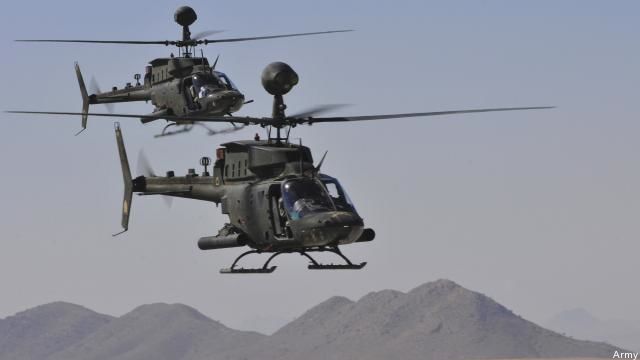
The Army retired the OH-58 Kiowa scout without a replacement.
AUSA GLOBAL FORCE SYMPOSIUM: After 14 years of cancelled programs, the Army has again resurrected its quest for a new scout chopper. The new armed reconnaissance aircraft — which could be a high-speed compound helicopter or a tiltrotor — would work with new kinds of drones to find targets for artillery and to destroy air defenses, clearing a path for a larger troop-carrying assault aircraft.
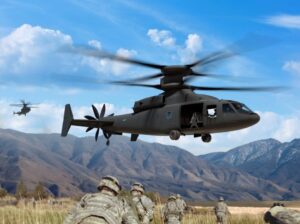
Sikorsky-Boeing SB>1 Defiant
The Army’s new emphasis on armed recon could potentially disrupt the Future Vertical Lift project designed for all four services. FVL has prioritized developing a mid-sized assault aircraft for carrying troops and cargo, which it calls Capability Set 3, over a small, agile scout, aka Capability Set 1. (FVL is looking at five categories overall). Both the Joint Multi-Role (JMR) demonstrators competing for FVL, the Bell V-280 Valor tiltrotor (already flying) and the Sikorsky-Boeing SB>1 Defiant compound helicopter (not yet) are assault aircraft with room for 12 to 14 heavily armed passengers. Sikorsky’s earlier, smaller S-97 Raider is more in the light scout category, however.
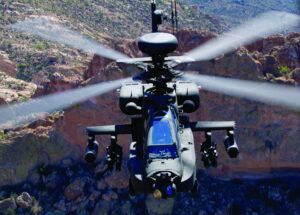
The AH-64E Apache is a formidable gunship thrust awkwardly into the role of scout.
The Army wants something badly because it hasn’t had a purpose-built scout helicopter since the Vietnam-vintage OH-58 Kiowa retired. Multiple attempts to replace Kiowa failed, from the stealthy Comanche (cancelled in 2004) to the Armed Aerial Scout (2013). The cost of maintaining the aging Kiowa, and the diminishing returns of continually upgrading it, finally became too much for the Army budget to bear.
Today, much larger AH-64 Apache gunships, aided by drones, perform the recon mission as best they can, but it’s a bit like asking a 150-pound pitbull to do the work of a 75-lb greyhound. The Apache is heavily armed, heavily armored and not quite so fast, although next-gen designs for FVL are faster. But the future reconnaissance mission, Brig. Gen. Wally Rugen said here, requires something small enough to “hide in radar clutter (and) the urban canyons of megacities,” avoiding detection so it can scout deep into defended airspace.
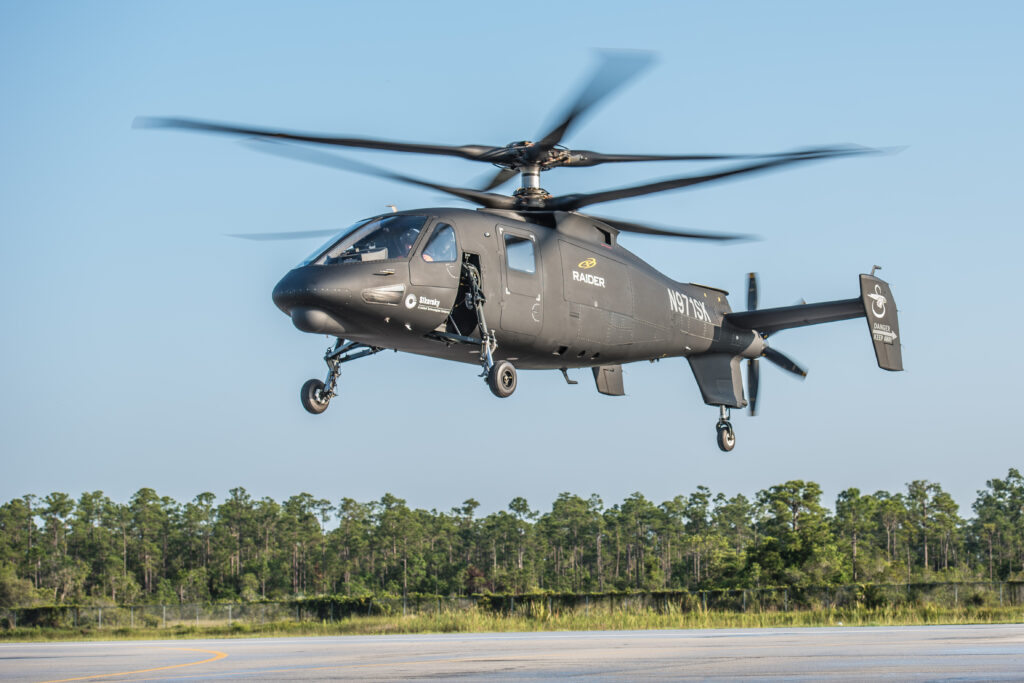
Sikorsky S-97 on its first flight
A New Priority
That fact that Rugen, the handpicked head of the service’s Cross Functional Team for aviation modernization, and Gen. James McConville, the Army’s Vice Chief of Staff, spoke together about the new push to reporters here today at AUSA makes clear this has institutional heft. The idea is not unprecedented: A year ago at the Aviation Association of America conference, the two-star commander of the Army aviation school at Fort Rucker, Maj. Gen. William Gayler, insisted that “the Army’s number one FVL need is an armed reconnaissance helicopter.” But this is the first time we’ve heard officers so close to the Chief of Staff state the need emphatically, and I could see the savvier reporters in the room perking up.
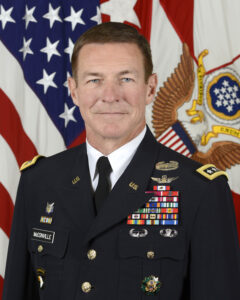
Gen. James McConville
In a sign of how fast Army modernization is evolving, Brig. Gen. Rugen didn’t even mention an armed recon aircraft during a conversation with reporters just last week. That doesn’t mean that Rugen wasn’t thinking about it already — he almost certainly was — but it definitely suggests he didn’t have approval to declare it a priority yet. I detect the hand of Vice Chief McConville, a scout and gunship pilot himself, who’s the official “senior mentor” for Rugen’s team. McConville has met with Rugen seven times in the last week, the two men said.
Increased “lethality” is a top priority of Defense Secretary Jim Mattis’s new National Defense Strategy, McConville argued today. “You could make the argument that a long-range assault helicopter increases lethality in some ways, but I could a make a stronger argument that a future attack-reconnaissance helicopter… is going to provide more lethality to the force,” he said. (While McConville didn’t say this aloud, an assault helicopter can carry infantry and ammunition, which in turn kill people; an attack-recon helicopter kills people both directly and by calling in artillery).
The Army’s concept for future combat requires “lethality at the tactical edge,” Rugen said. That means a new drone “purpose built” to penetrate advanced air defenses — current drones are sitting ducks — and an optionally-manned scout aircraft that can accommodate a human crew or fly unmanned depending on the complexity and danger of the mission. The two aircraft together are the Army’s “advanced team,” said Rugen. “You can’t take them individually.”
The drone will be first into the breach, Rugen said, but the optionally manned scout aircraft will be quick to follow it into defended airspace. After they’ve destroyed enemy radars and missile batteries — both with their own weapons and by spotting them for long-range artillery — and cleared a corridor through the defenses, can the assault aircraft full of human troops move in.
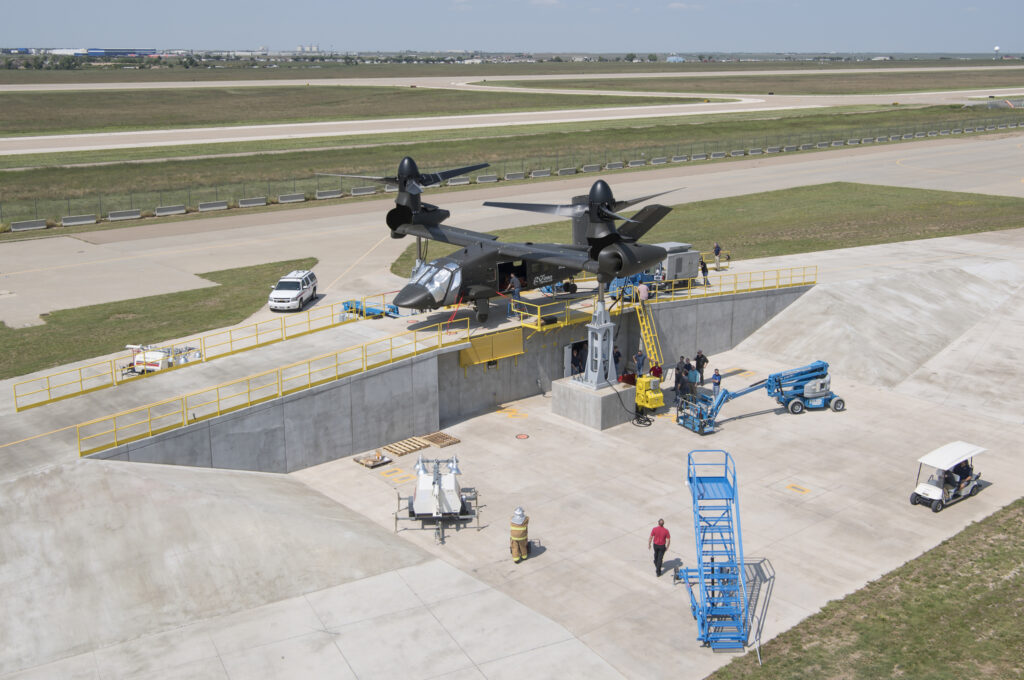
Bell’s V-280 Valor prototype in ground testing.
Impact on FVL
In this concept, both the scout and assault aircraft are new designs coming out of the FVL program, specifically its Capability Sets 1 and 3. What about a new attack helicopter to replace the AH-64, which would probably fall under Capability Set 2? The Army needs both a light scout and a heavy gunship, Rugen said, but “I don’t think we’re going to take on three cap(ability) sets at one time.”
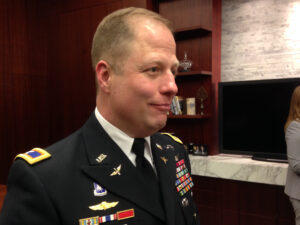
Walter Rugen
Everything I’ve seen suggests the Army is pretty happy with the Apache in its intended role of gunship. “It’s the world’s greatest attack helicopter,” McConville said. The service is investing heavily in upgrading its Apaches to the latest AH-64E configuration, which implies it probably will keep them in service for a long time. The armed reconnaissance mission, by contrast, is an acute need.
That said, no one has a firm timeline yet. Is the Army asking for FVL to change its sequencing, so Capability Set 1 comes at the same time as Capability Set 3?
“We’re not prepared to tell you,” McConville said. “We’re not in a position where we have to make a decision, so we’re keeping options open and looking at what industry brings to us.”
The CFT is helping to set up those decisions, Rugen said. “We’re getting the major questions answered that the senior leaders have asked,” he told reporters, noting his seven meetings with McConville. “We’re getting access and hard decisions are being made…at the senior levels, so that shows how important FVL is to the leadership of the Army.”
Subscribe to our newsletter
Promotions, new products and sales. Directly to your inbox.
